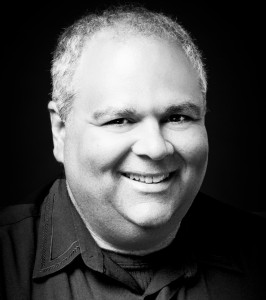

by Mike “Buzz” Buzzelli, ‘Burgh Vivant.
Clarissa is going to explain the situation as best she can. The precocious eleven-year-old, HIV-positive, shoe designer worships Mr. Joy, a Chinese immigrant who owns a shoe repair shop in Harlem. She is one of nine characters in Tangela Large’s metamorphic performance in “Mr. Joy.”
Nine pairs of shoes are set on a city street, each pair reflecting a character in the jigsaw puzzle of shop owner’s life. Playwright Daniel Beaty examines race, socio-economic statuses, and even gender roles through one finely-tuned instrument, the actor herself. The story unfolds as each character comes forward from Large’s body, men and women, young and old, rich and poor, black and white. Each character gets their moment in the sun, and it’s a star turn for Large who plays every single one of them.
Beaty covers a lot of ground, all of it in his neighborhood of Harlem. The issues of social injustice, race, poverty, hate and fear are still polarizing our country. The problems are systemic. It’s an important discussion, but there is a little bit of proselytizing in the play, and it’s preaching to the converted. Still, some of it is difficult to hear. The truth often is.
In every one-person show, where an actor takes on multiple roles, some characters are more interesting than others. DeShawn and Ashes are marvelously represented. They are powerful voices in the multitude and Large inhabits them with aplomb. DeShawn is a street poet whose path goes off the rails pretty quickly. Ashes is a transgendered man-to-woman who longs for a relationship with her republican father, Clifford, and his vapid blonde consort, Rebecca (each is represented as well). Ashes and DeShawn’s stories are riveting. However, Grandma Bessie is a bit of a caricature. She’s a gangster granny with a Kung Fu grip. Large channels Tyler Perry’s Madea for the role.
As the play ended, the audience leapt to their feet with a thunderous applause and Large deserves the lion’s share of the credit. She’s dazzling in the eighty-five minute performance. She’s responsible for every word, every gesture and it’s a helluva feat. However, there are some minor quibbles that rest mostly on the playwright’s shoulders. Beaty instills the play with an overwhelming amount of coincidence. Not only is every character connected to Mr. Joy, every character is connected to each other, and they can’t wait to tell you. Nothing is left to the imagination. At one point, a homeless man tells you how he knows each and everyone one of them. A minor rewrite could easily excise this petty annoyance. There are a few way-to-obvious jokes that should end up on the other side of the delete key.
If there’s a main character in show, other than the unseen Joy himself, it would be Clarissa. She is the emotional core of the story. Unfortunately, the plucky girl also plucks some nerves (Editor’s Note: This reviewer has a pet peeve: adults playing children).
It’s easy to imagine that Beaty set Large loose on the stage by herself and let her run wild, but credit must be attributed to director Lou Jacob. Though I, personally, wish Jacob would have toned down Bessie and Clarissa a bit more, he has a good grasp of the structure and timing of the play. It’s a kinetic and brisk 85 minutes.
Additional credit must be lauded on Artistic Director Tracy Brigden for choosing such a thought-provoking work. With a little more nuance, “Mr. Joy” could be a tremendous piece of theater. There’s enough right with “Mr. Joy” to put it on every theater-goer’s Must See List. The real problems lie in our society. Beaty is picking at a scab that may never heal, but it’s important we pull back the gauze and look at the wound.
“Mr. Joy” runs till February 15 at the City Theatre, 1300 Bingham Street, Pittsburgh (South Side).
-MB.
